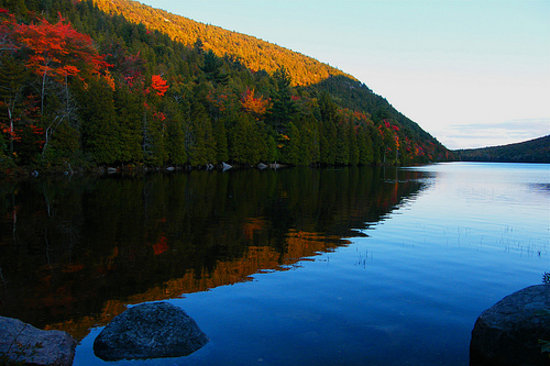 In this week’s installment of Alpaca Sweater (again, it’s a pun), we’re headed to Acadia National Park. First of all, the drive to this national landmark is a beautiful one, which in only then overshadowed by Acadia itself. And, because it’s late fall, you’d better take this trip soon or else you’ll miss the remaining foliage! You’ve got a little bit of time left before the trees go bare bones – but, even if you don’t make it up North for a few more weeks, at least you know you’ll never be missing the pines. So, let’s pack a sweater and hit the road to one of Maine’s biggest claims to fame.
In this week’s installment of Alpaca Sweater (again, it’s a pun), we’re headed to Acadia National Park. First of all, the drive to this national landmark is a beautiful one, which in only then overshadowed by Acadia itself. And, because it’s late fall, you’d better take this trip soon or else you’ll miss the remaining foliage! You’ve got a little bit of time left before the trees go bare bones – but, even if you don’t make it up North for a few more weeks, at least you know you’ll never be missing the pines. So, let’s pack a sweater and hit the road to one of Maine’s biggest claims to fame.
First, some background:
- In 1919, Acadia was created as Lafayette National Park. (It’s name was changed to the one we know and love in 1929).
- The area that Acadia inhabits – much of Mount Desert Island – was originally populated by the Wabanaki people.
- Acadia is over 47,000 acres.
- Every summer, the park closes a handful of trails to protect the endangered peregrine falcons as they nest.
- The park’s original name (Lafayette) was in honor of Marquis de Lafayette, a French supporter of the American Revolution.
- In the fall of 1947, a tragic fire singed 10,000 or so acres of the park.
In addition to its extremely interesting history, Acadia has a very cool present. This area of Maine, rich in history and nature, has become one of the most frequented places in the Pine Tree State, with almost 2.5 million visitors each year. Also, the Schoodic Education and Research Center was established at Acadia in 2002, when the National Park Service acquired a former naval base located within the park. The Center is now the largest of the country’s National Park Service research centers and supports scientific development.
One of the second most recognized names in Maine is Cadillac Mountain, which exists on Mount Desert Island’s eastern side.  The mountain’s peak is 1,528 feet and it features stunning views, especially during sunrise and sunset. On and around Cadillac Mountain, and throughout the entire park, are over forty unique animal species, including the famous Maine moose. Acadia used to be home to the mountain lion and gray wolf, both of which are thought to have vacated the area due to the increased volume of human activity (likely because humans scare off small animals, AKA their prey).
The mountain’s peak is 1,528 feet and it features stunning views, especially during sunrise and sunset. On and around Cadillac Mountain, and throughout the entire park, are over forty unique animal species, including the famous Maine moose. Acadia used to be home to the mountain lion and gray wolf, both of which are thought to have vacated the area due to the increased volume of human activity (likely because humans scare off small animals, AKA their prey).
So – as you can see, Acadia National Park is one of the most amazing sights Maine has to offer. Close to nearby Bar Harbor and nestled on the ocean, Acadia is all the best of what Maine has to offer. If you’re interested in putting in one final trip before the winter really sets in, Acadia’s Park Headquarters and Blackwoods Campground are still open and waiting.
